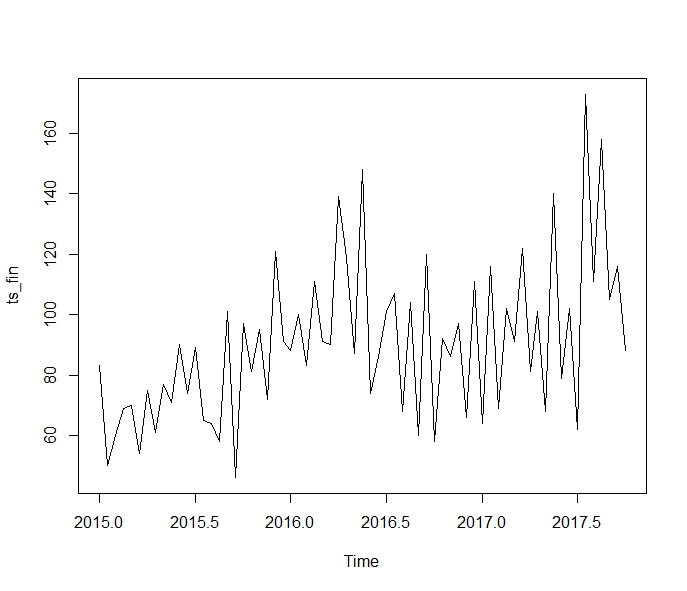I would like to share my analysis in order to have guidance on how to improve the time series results.
Here you will find a table comparing real values vs forecasted ones.
Below you will find the code that generated that output (in R).
# Load required libraries
library(forecast)
library(lubridate)
library(tidyverse)
library(scales)
library(ggfortify)
# Load dataset
emea <- read.csv(file="C:/Users/nsoria/Google Drive/Trabajo/AMS Globales/812_Finanzas.csv", header=TRUE, sep=';', dec=",")
# Create time series object
ts_fin <- ts(emea$Valor, deltat = 1/24, start = c(2015, 1))
# Pull out the seasonal, trend, and irregular components from the time series
model <- stl(ts_fin, s.window = "periodic")
# Predict the next 3 bi weeks of tickets
pred <- forecast(model, h = 5)
# Round values to better accuracy
pred$mean <- round(pred$mean)
pred$upper <- round(pred$upper)
pred$lower <- round(pred$lower)
I have added in this link the dataset which is used here.
My main concern would be how to improve accuracy for forecasted results. I am looking into a possibility to add a machine learning algorithm but I am open to suggestions.
Thanks in advance.
Edit 24/01: As suggested, you will find the actual results for the prediction and the different outputs.





